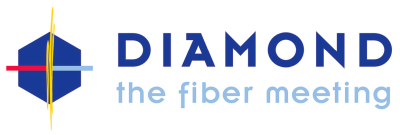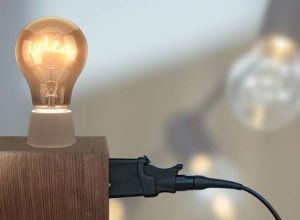power over fiber (original) (raw)
Definition: delivery of power for electronic devices via light in an optical fiber which is converted to electricity
Category:  fiber optics and waveguides
fiber optics and waveguides
Related: fibersfiber cableslaser diodesfiber optics
Page views in 12 months: 4467
DOI: 10.61835/ibt Cite the article: BibTex BibLaTex plain textHTML Link to this page! LinkedIn
Content quality and neutrality are maintained according to our editorial policy.
📦 For purchasing power over fiber systems, use the RP Photonics Buyer's Guide — an expert-curated directory for finding all relevant suppliers, which also offers advanced purchasing assistance.
Contents
What is Power Over Fiber?
Optical fibers or fiber cables can be used for transmitting optical power from a source to some application. The term power over fiber or photonic power implies that optical power is converted to electrical power for some electronic device. That conversion can be done with a photovoltaic cell, i.e., a semiconductor device based on a material such as gallium arsenide, indium phosphide, or indium gallium arsenide. A typical system contains
- a laser diode emitting a few watts of optical power, being the original optical power source,
- a multimode fiber with a length between a couple of meters and a few hundred meters, and
- a photovoltaic cell with an active area of several square millimeters.
For short-range transmission, laser diodes emitting around 750–980 nm are typically used in combination with GaAs-based or silicon-based photovoltaic cells. Long transmission distances (possibly several kilometers) can be realized with systems operating at longer optical wavelengths because this drastically reduces Rayleigh scattering.
Typical transmitted powers are some hundreds of milliwatts or a few watts, but there is no principal reason why one should not be able to transmit much more, such as dozens or even hundreds of watts, given that multimode fibers with a sufficiently large core can transmit many kilowatts. It is only that the required photovoltaic cells would lead to a very large receiver.
A possible alternative is the light transmission through free space, but that approach is normally less practical, since it involves alignment and a higher risk of interruptions of the beam, and for large transmission distances also limitations due to beam divergence. In addition, there may be problems with laser safety.
Power Efficiency of Power over Fiber
The following sources of power losses need to be considered:
- Efficient laser diodes typically have efficiencies around 50% to 60% including fiber coupling.
- Propagation losses in the fiber (through scattering and absorption) are usually negligible, unless the transmission distance is quite long.
- While photovoltaic cells typically feature efficiencies of only ≈25% when used as solar cells, they can be far more efficient when operated with quasi-monochromatic light: efficiencies well about 50% are easily reachable, even nearly 70% have been demonstrated already, and even somewhat more should be possible. For that, the photon energy of the laser must be somewhat above (but not too far above) the band gap energy.
- Some additional losses may occur in electronics needed to transform the generated voltage to the required level and to stabilize it for the application.
Overall, a power conversion efficiency (electrical-to-electrical) around 20% to 30% should typically be feasible. For low required power levels, such losses should normally be well acceptable, while for higher power levels one will normally try to further optimize the efficiency to 40% or higher.
Advantages of Power over Fiber
Although an insulated copper wire is a simpler technology for transferring electric power, power over fiber offers advantages in specific situations:
- Non-conducting fiber cables (based on glass fibers or plastics) can be installed where high electric voltages occur. For example, a fiber can transmit power for a current transducer in a high-voltage transmission line. (Note that there are also fiber-optic sensors where no electrical power is needed locally.) Such current sensors with an optical power isolator can replace bulky transformer systems.
- The insulating property is also useful when a device (e.g. some radio signal receiver) is connected to an antenna, which could be hit by lightnings. There is then no risk that lightning strokes are transmitted via the cable.
- Optical delivery of power avoids any sensitivity to strong magnetic fields (e.g. in magnetic resonance imaging) and to electromagnetic interference. Conversely, no electromagnetic radiation, which might disturb other devices, can be emitted, and also no DC magnetic fields are generated.
- There is no risk that explosive materials (e.g. in a fuel tank of an airplane) can be ignited, as could occur e.g. via an electric spark.
- In a system for optical fiber communications, there may be spare fibers which can be used for transmitting power when an electrical connection does not exist. Other possibilities are to use some separate fiber core(s) of a multi-core fiber, or even to use one fiber core for both power delivery and data transmission.
- A fiber can have a far lower weight than an electrical cable, and may also be thinner.
- The same fiber may be used to send back data e.g. from a sensor, using some other wavelength channel.
Therefore, a number of applications can be envisaged in areas such as industrial sensors, aerospace, and optical communications.
Obvious disadvantages are the cost of optical components and the limited potential in terms of available power and conversion efficiency. There may also be a laser safety issue associated with several watts of optical power, which can leave the fiber when it is broken.
Laser Safety
During normal operation, the laser light is fully confined in the fiber, and there is no risk e.g. for nearby persons. However, a substantial laser safety issue may arise when the fiber is broken, so that the laser light can exit. Despite the substantial divergence, a few watts of near-infrared light need to be considered as fairly dangerous for human eyes. Therefore, one may need to use a well protected fiber cable, or possibly include additional features for automatically switching off the laser when a fault is recognized.
Suppliers
Sponsored content: The RP Photonics Buyer's Guide contains three suppliers for power over fiber systems. Among them:
⚙ hardware🧰 development
In Power over Fiber applications, optical connectors with low loss and high reliability with high optical power are needed. Diamond Power Solution (PS) family is perfect to fulfill both of these requirements. It allows a reliable connection with optical power up to 16 W and assures the typical Diamond top performances in terms of Insertion Loss (IL). This maximize the efficiency of the Power over Fiber application minimizing at the same time the connector failures.
Questions and Comments from Users
Here you can submit questions and comments. As far as they get accepted by the author, they will appear above this paragraph together with the author’s answer. The author will decide on acceptance based on certain criteria. Essentially, the issue must be of sufficiently broad interest.
Please do not enter personal data here. (See also our privacy declaration.) If you wish to receive personal feedback or consultancy from the author, please contact him, e.g. via e-mail.
By submitting the information, you give your consent to the potential publication of your inputs on our website according to our rules. (If you later retract your consent, we will delete those inputs.) As your inputs are first reviewed by the author, they may be published with some delay.

